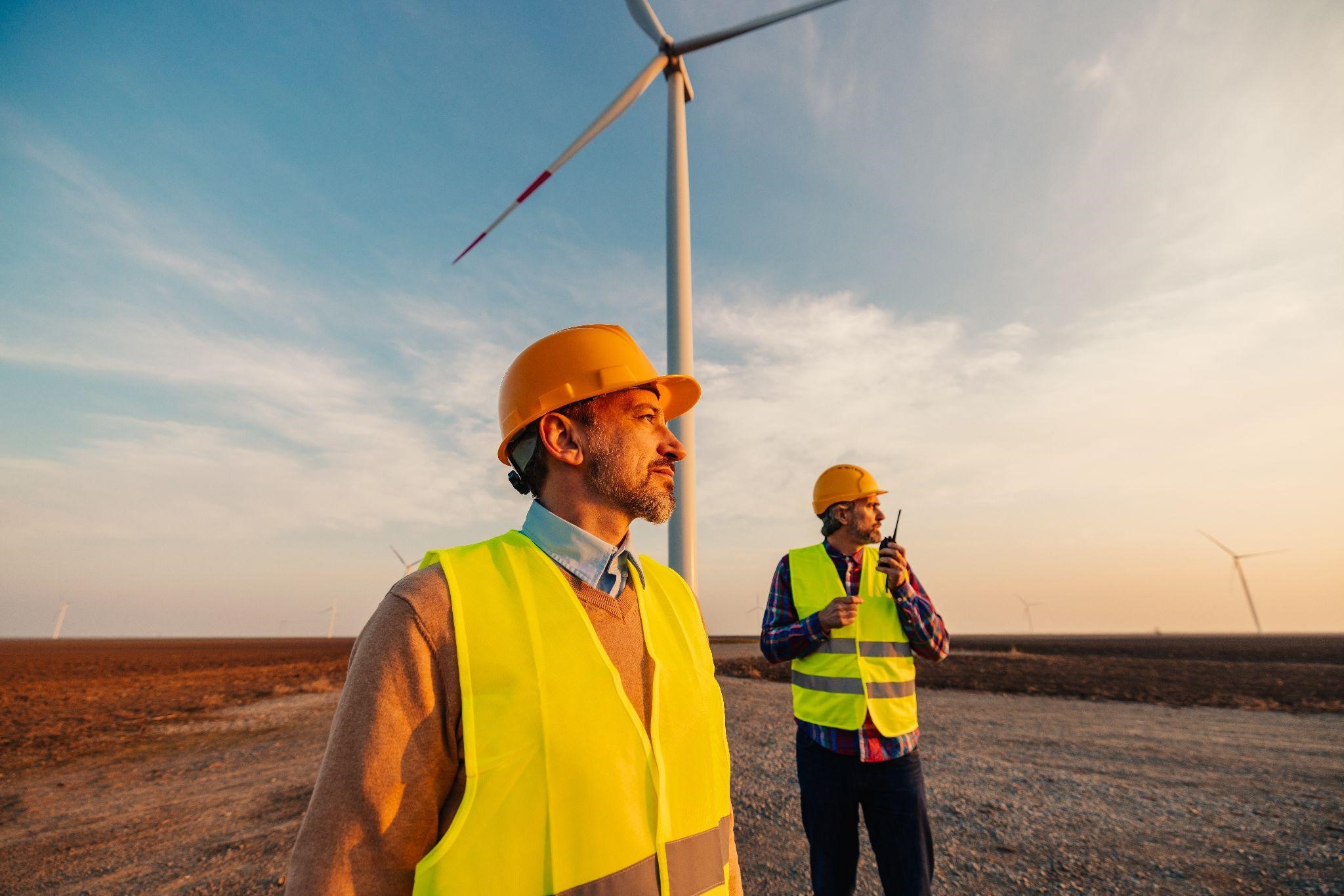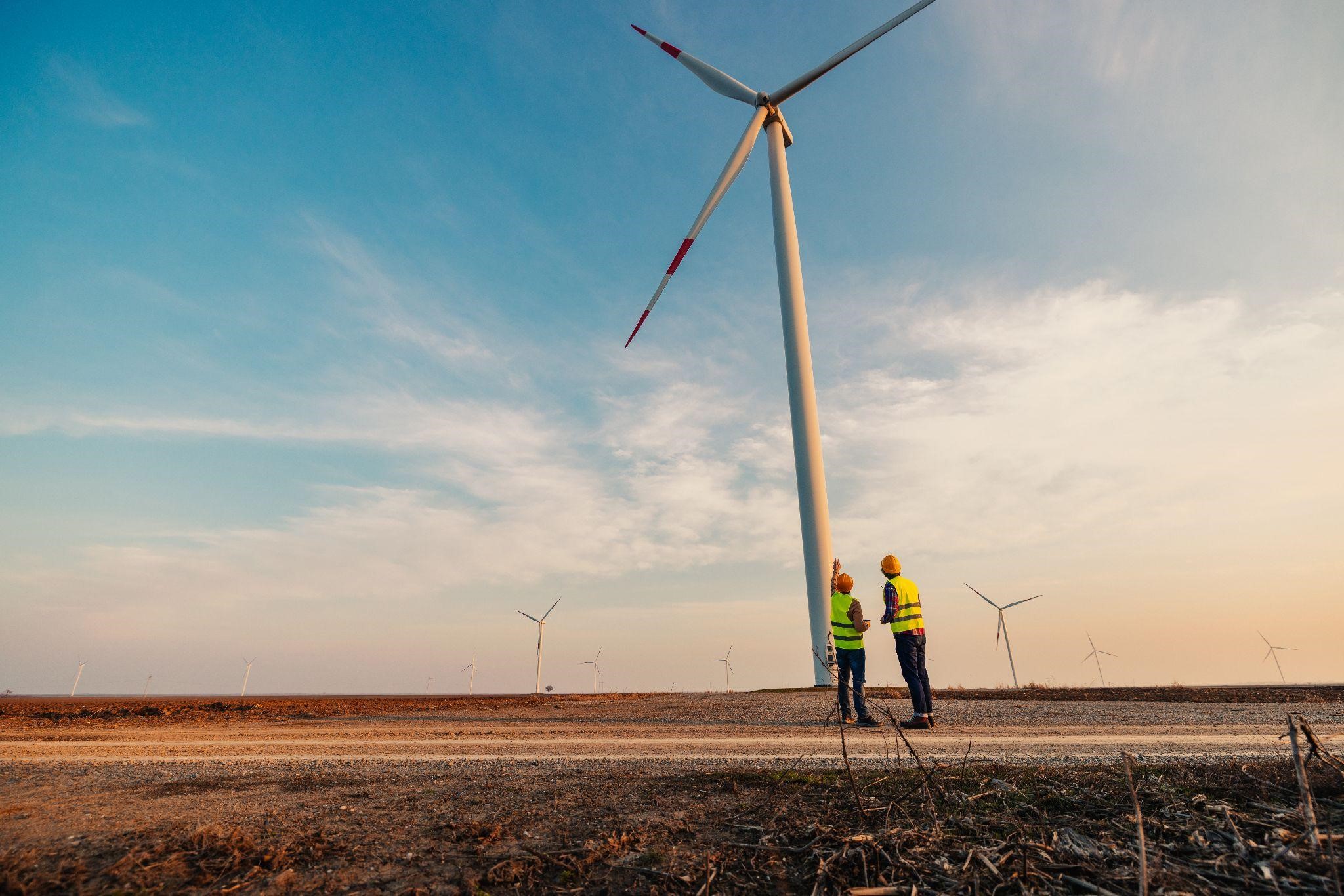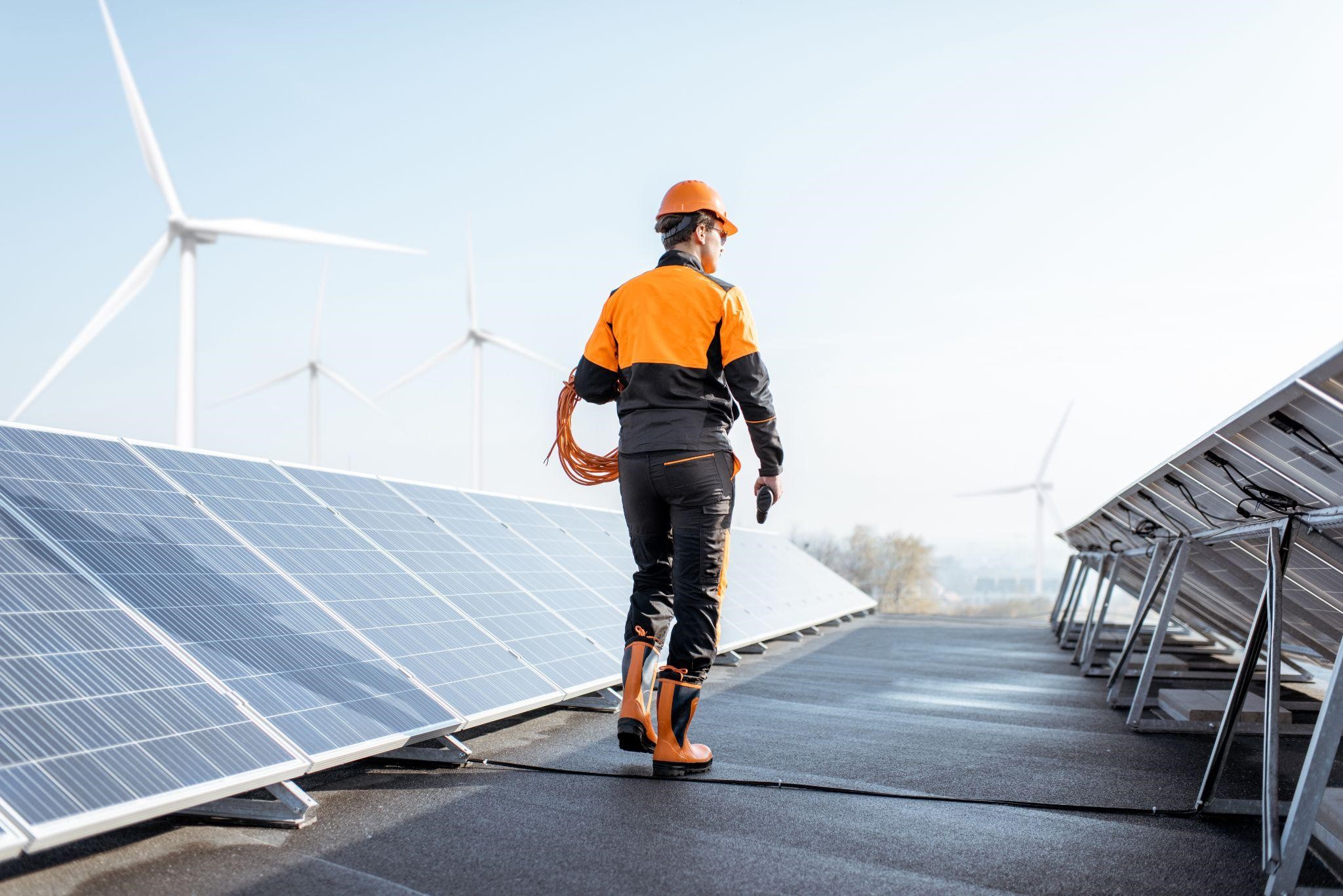The wind energy sector is one of the newer industries offering a rewarding career path to individuals who are hard working and eager to learn the ins-and-outs of sustainable energy
While most turbine technicians master their skills on the job, all wind turbine technicians will learn the basics of being a wind turbine technician in a trade school that offers certification programs in this field.
This article describes some of the job options available to those with wind turbine technician training as well as a few of the things to take into consideration if you are someone that is considering joining the field.

A wind farm technician is responsible for the maintenance and repair of all the turbines at a wind farm. This can include lubricating moving parts, checking fluid levels, replacing worn parts, and performing general maintenance. Wind farm technicians are also in charge of inspecting the exterior and physical integrity of the turbines.
Wind turbine service technicians are responsible for maintenance and repairs for a specific type of turbine. Many technicians work for the turbine manufacturer, but third-party service companies also employ a handful of wind turbine service technicians..
As a wind turbine service technician, you are also required to perform routine maintenance and wind turbine tests.
A wind turbine installation technician is responsible for erecting new wind turbines and decommissioning old ones. This job includes assembling towers, attaching blades, and connecting turbines to the power grid.
A turbine commissioning technician is responsible for testing new turbines to ensure they operate correctly and meet all safety standards. Troubleshooting and fixing any difficulties during testing may be part of this job.
The development and management of a wind farm are overseen by a wind farm project manager. This job includes coordinating the work of different teams, ordering materials, and ensuring the project stays on schedule and within budget.
A wind turbine servicing contractor is responsible for providing maintenance and repairs for a specific type of turbine. Many technicians work for the turbine manufacturer, but some may be employed by third-party service companies.
A wind project developer is responsible for researching, planning, and developing wind energy projects. This job may involve conducting feasibility studies, preparing project proposals, and coordinating with government agencies.

A wind farm asset manager is responsible for overseeing the finances and operations of a wind farm. This job includes budgeting, forecasting costs, and maintaining records.
A turbine sales representative is responsible for selling turbines to customers. This job may involve presentations, negotiating contracts, and providing customer service.
The role of a wind energy consultant is to advise customers on all areas of wind energy development. This job may involve collecting turbine data, market analysis, preparing feasibility studies, and providing project management services.
Each of these positions comes with its own responsibilities, but all require a basic understanding of how wind turbines work and knowledge of turbine maintenance and repair. With the proper training, you can pursue any of these exciting career paths.
Wind turbine technicians are responsible for maintaining, repairing, and operating wind turbines. They are also responsible for ensuring that the turbines operate safely and efficiently and that they can meet the customer's or power company's demands.
To become a wind turbine technician, one must have a high school diploma or equivalent and complete an industry recognized training program. Some states also require certification to become a wind turbine technician.
The duties of a wind turbine technician vary depending on their specific job role but can include inspecting turbines, troubleshooting problems, performing maintenance and repairs, and keeping records.
They may also be responsible for conducting performance tests, overseeing the installation and commissioning of new turbines, and providing training to other technicians. In some cases, wind turbine technicians may also be responsible for inspecting towers and blades for damage and replacing worn or damaged parts.
Sometimes these technicians operate in groups, with each member specializing in a particular area.
Wind turbine technicians typically work full-time, and their schedules may include nights and weekends. They are sometimes required to travel to distant regions for long periods.
Due to the nature of their work, wind turbine technicians must be physically fit and able to climb tall structures safely. They must also be capable of working individually or in a group environment and have strong problem-solving skills.

As we mentioned earlier, wind turbines are starting to pop up across the country. Given that this is the case, the outlook for a career as a wind turbine technician can be extremely rewarding.
You can follow these steps to become a wind turbine technician.
You have to learn about the various type of turbines, their components, and how they function. Also, familiarize yourself with the terminology used in the industry.
Once you have a good understanding of the technology, you can begin to learn about the maintenance and repair of turbines on your own. This entry-level of learning is a great way to determine whether becoming a wind turbine technician is truly the career path for you.
Many online resources can help you with your research. For example, the Wind Energy Technologies Office (WETO)'s website provides information on all aspects of wind energy, including technology, applications, environmental impacts, and more.
Aspiring wind turbine technicians can enroll in industry-recognized trade school programs to gain the skills and knowledge needed for this career.
These programs typically last one to two years and cover electrical theory, safety procedures, and maintenance techniques. You are required to sit for a certification exam when you complete the program.
Many wind turbine technician courses are offered during evening hours or online to accommodate the schedules of their adult students.
Becoming a certified wind turbine technician sometimes requires completing an on-the-job training program approved by the International Renewable Energy Agency (IRENA).
There are many benefits to completing this type of training, including gaining real-world experience and learning from experienced technicians.
On-the-job training programs typically last between six months to one year and can be done either full-time or part-time. During this time, trainees will learn how to operate and maintain wind turbines and troubleshoot techniques safely. You can also learn how to repair wind turbines.
After completing an on-the-job training program, you will be able to find employment as a wind turbine technician.
Obtaining certification from a professional organization is crucial to becoming a wind turbine technician. The certification confirms that you have the essential abilities and knowledge to perform your functions correctly.
There are many certification organizations to choose from, so do your homework to choose the one that's appropriate for you.
One of the best ways to become a wind turbine technician is to stay current with industry trends and developments. This way, you'll be able to learn about new technologies and methods that can help you improve your skills and knowledge.
Keeping up with industry developments will also help you identify prospective job opportunities. In addition, you can use several resources to stay informed about wind energy industry news, such as online forums, trade publications, and websites devoted to the topic.

On a day-to-day basis, a wind turbine technician may inspect turbines for damage, perform routine maintenance tasks such as lubricating gears and replacing filters, or troubleshoot and repair mechanical or electrical problems.
In some cases, technicians may also be responsible for monitoring the performance of turbines and collecting data for analysis.
Those interested in this career should have experience working with machinery and electrical equipment and a strong understanding of physics and math. Good problem-solving skills are also essential, as is the ability to work safely in potentially dangerous conditions.
Wind turbine technicians must have a strong understanding of electrical systems, as they are responsible for installing, maintaining, and repairing the turbines. In addition, they need a strong understanding of physics and engineering. This knowledge will be critical in understanding how wind turbines work and troubleshooting any issues that may arise.
Wind turbine technicians need to be comfortable working at heights. They must also be able to climb the towers and work in confined spaces safely. Many turbines are located on tall towers, and technicians will need to be able to access these areas.
Many technicians enter the field with an associate's degree in renewable energy or a related field, but some may have started their career with no more than a high school diploma. Depending on how much you’re willing to invest in your career and what position you’re interested in taking on, the level of education needed will vary. On-the-job training is also typically required. In addition, some states require wind turbine technicians to be licensed electricians.
A few educational paths can lead to becoming a wind turbine technician. Many community colleges offer two-year programs in renewable energy technology that can provide the necessary skills and training.
Alongside that, there are various trade school training programs that offer certification in specific areas of turbine maintenance and repair. In addition, there are turbine manufacturers who also provide training programs for those who wish to become certified to work on their specific brand of turbine.
Some of the pros of being a wind turbine technician include:
Some turbine engineers work in offshore wind farms, while others may work on land-based projects. There are also many different types of turbine designs, so there is always something new to learn. It means that no two days are alike, and there is always something new to challenge and keep you engaged
As a wind turbine engineer, you'll work with some of the most cutting-edge and innovative technology in the renewable energy industry. You'll have the opportunity to work on projects at the forefront of wind turbine technology, and you'll be able to help shape the future of renewable energy.
Wind turbine technology is essential because it helps create a more sustainable world for future generations and also helps reduce pollution and greenhouse gas emissions. Turbine engineers play a vital role in making this happen by designing and developing wind turbines and other renewable energy systems.
A career as a turbine engineer may be both personally and professionally gratifying. It's a fascinating area with the potential to impact the world positively. If you are interested in helping to create a more sustainable future, then this may be the career for you.
Some of the cons of being a wind turbine technician include:
Working as a turbine engineer can be a very demanding job. There is the potential for long hours and shift work, which can be more difficult to manage than a career with a set schedule put in place.
If you are not comfortable working long hours or on-call, this may not be the right career. Finally, because wind turbines are often located in remote areas, technicians should be prepared for long periods away from home for periods of the season or when additional hands are needed to complete a job.
Turbine engineers may deal with high winds, extreme temperatures, and other potentially hazardous conditions. In some cases, these conditions can lead to accidents or injuries.
Working as a turbine engineer can be a physically demanding job. The job requires workers to be physically fit and comfortable working in high places.
You may need to work at heights, in cramped spaces, and in other difficult conditions. It can be challenging for some people, and it is essential to ensure that you are physically up to the task before taking on this type of work.
Working as a turbine engineer requires specialized training and certification. This can be a con, as it can be expensive and time-consuming to obtain the necessary qualifications. However, it is also a benefit, as it ensures that engineers are properly qualified to work on this equipment.
As you can see, wind turbine technicians can play different roles depending on their specific position. Being a wind turbine technician is a lucrative profession that requires a lot of experience and expertise.
If you want to become a wind turbine technician, you can start by attending a trade school [Link to Benefits of Trade School article].
Pinnacle Career Institute provides excellent training to help you become a successful wind turbine technician, from teaching you how to repair wind turbine equipment to educating you on wind energy technology. PCI also offers wind turbine technician courses online, providing a great alternative to college for individuals interested in this career path.
About PCI
We believe education has the power to change our lives, our community, and our future.
Address: 11500 N Ambassador Dr Suite 221, Kansas City, MO 64153
Phone Number: (800) 676-7912
Useful Links
News & Updates